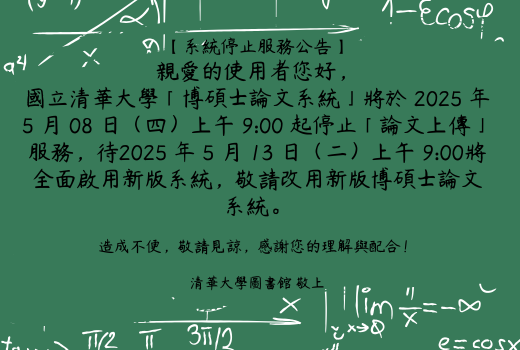|
1. International Atomic Energy Agency, Use of computational fluid dynamics codes for safety analysis of nuclear reactor systems, IAEA-TECDOC- 1379, 2003.
2. Nuclear Energy Agency, “Assessment of Computational Fluid Dynamics (CFD) for Nuclear Reactor Safety Problems”, NEA/CSNI/R(2007)13, 2008.
3. Nuclear Energy Agency, “Best Practice Guidelines for the use of CFD in nuclear Reactor Safety Applications”, NEA/CSNI/R(2007)5, 2007.
4. The American Society of Mechanical Engineers, “Standard for Verification and Validation in Computational Fluid Dynamics and Heat Transfer”, ASME V&V 20-2009, 2009.
5. M.V. Holloway, H.L. McClusky, D.E. Beasley, “The Effect of Support Grid Features on Local, Single-Phase Heat Transfer Measurements in Rod Bundles”, Journal of Heat Transfer, Volume 126, 2004, pp.43-53.
6. Chih-Hung Lin , Cheng-Han Yen, Yuh-Ming Ferng, “CFD investigating the flow characteristics in a triangular-pitch rod bundle using Reynolds stress turbulence model” , Annals of Nuclear Energy 65, 2014, pp.357-364
7. United States Nuclear Regulatory Commission, ―Computational Fluid Dynamics Best Practice Guidelines for Dry Cask Applications- Final Report‖, NUREG-2152(2013), 2013.
8. K. Podila, Y.F. Rao, M. Krause, J. Bailey Lefante et.al , “A CFD simulation of 5x5 rod bundles with split-type spacers”
9. Seok-Kyu Chang, Seok Kim, Chul-Hwa Song , “Turbulent mixing in a rod bundle with vaned spacer grids:OECD/NEA–KAERI CFD benchmark exercise test”, Nuclear Engineering and Design, Volume 279,2014,pp. 19–36
10. Lifante, B. Krull, Th. Frank, R. Franzb, U. Hampel, “3 × 3 rod bundle investigations, CFD single-phase numericalsimulationsC.”, Nuclear Wnginnering and Design, Volume279, 2014, pp. 60-72.
11. Lei Yang , Wenzhen Chen , Lei Luo , Xinwen Zhao , “Calculation of radiation heat transfer view factors among fuel rod bundles based on CFD method.” , Annals of Nuclear Energy, Volume 71,2014, pp.462–466.
12. J.M. Mart´ın-Valdepe˜nas, M.A. Jim´enez, F. Mart´ın-Fuertes, J.A. Fern´andez, “Improvements in a CFD code for analysis of hydrogen behaviour within containments.” , Nuclear Engineering and Design, Volume 237, 2007, pp.627-647
13. Hyoung Tae KIM, Bo Wook RHEE & Joo Hwan PARK, “Application of Zircaloy/Steam Oxidation Model to a CFd code and its Validation against a CANDU Fuel Channel Experient: CS28-2” , Journal of Nuclear Science and Tecnology, Volume 44, 2007, pp. 1385-1394.
14. Yifan Nie, Wei Xiao, “Chemical and physical adsorption of a H2O molecule on a metal doped Zr(0001) surface,” Journal of Nuclear Materials ,Volume 452, 2014, pp. 493-499
15. Dong Jun Park, Hyun Gil Kim, Yang Il Jung, Jung Hwan Park, Jae Ho Yang, Yang Hyun Koo, “Behavior of an improved Zr fuel cladding with oxidation resistant coating under loss-of-coolant accident conditions,” Journal of Nuclear Materials, Volume 482, 2016, pp.75-82
16. Steven C. Johnson, Robert E. Henry, and Chan Y. Paik, “Severe Accident Modeling of a PWR Core with Different Cladding Materials,” Proceedings of ICAPP, Paper 12175, 2012
17. Xiaoli Wu, Wei Li, Yapei Zhang, Wenxi Tian, Guanghui Su, Suizheng Qiu, “Analysis of accidental loss of pool coolant due to leakage in a PWR SFP,” Annals of Nuclear Energy,Volume 77, 2015, pp.65-73
18. Chien-Chung Liu, Yuh-Ming Ferng , Chunkuan Shih , “Numerically simulating the thermal–hydraulic characteristics within the fuel rod bundle using CFD methodology. ”
19. Taro Kato, Ikuji Takagi, Kan Sakamoto, Masaki Aomi , “Hydrogen diffusivity in oxide layers formed in Zr alloy in air or steam” Journal of Nuclear Materials
20. Tapan K. Sawarn , Suparna Banerjee, Akanksha Samanta, B.N. Rath, Sunil Kumar, “Study of oxide and a-Zr(O) growth kinetics from high temperature steam oxidation of Zircaloy-4 cladding” Journal of Nuclear Materials, Volume467, 2015, pp.820-831
21. V. F. Urbanic, T. R. Heidrick, “High-temperature oxidation of Zircaloy-2 and Zircaloy-4 in steam,” Journal of Nuclear Materials, Volume 75, 1978, pp.251-261.
22. L. Baker, L. C. Just, “Studies of metal-water reactions at high temperatures, III: Experimental and theoretical studies of the zirconium-water reaction,” ANL-6548, ANL, 1962.
23. Cathcart, J. V. Pawel et al., “Zirconium metal-water oxidation kinetics, IV: reaction rate studies, ” ORNL/NUREG-17, ORNL, 1977
24. S. Leistikow, G. Schanz, “Oxidation kinetics and related phenomena of Zircaloy-4 fuel cladding exposed to high temperature steam and hydrogen-steam mixtures under PWR accident conditions,” Nuclear Engineering and Design, Volume 103, 1987, pp.65-84
25. Yifan Nie, Wei Xiao, “Chemical and physical adsorption of a H2O molecule on a metal doped Zr(0001) surface,” Journal of Nuclear Materials ,Volume 452, 2014, pp. 493-499
|
